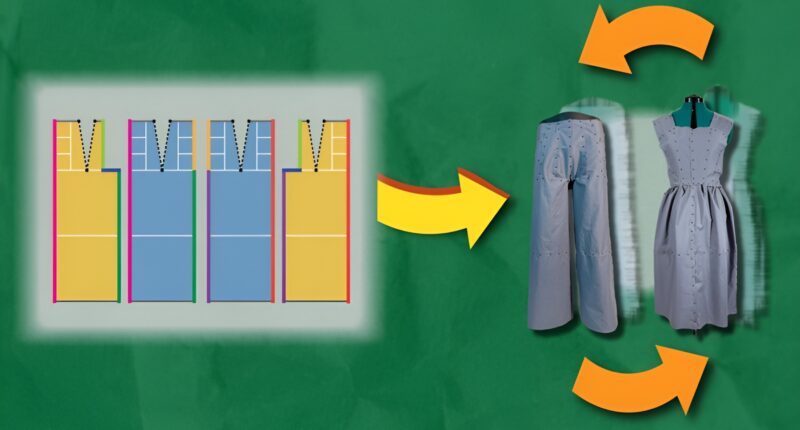MIT researchers have developed software that enables users to design modular clothing that can be reconfigured into different garments, potentially reducing the 92 million tons of textile waste produced annually.
The Refashion system, created by MIT’s Computer Science and Artificial Intelligence Laboratory and Adobe, breaks down fashion design into smaller building blocks, allowing users to draw, plan and visualise each element of a clothing item. The tool generates blueprints for reconfigurable clothing, such as trousers that transform into a dress or a shirt with an attachable hood.
Rebecca Lin, MIT Department of Electrical Engineering and Computer Science PhD student and lead author on the project, said the team wanted to “create garments that consider reuse from the start”. She added that “most clothes you buy today are static, and are discarded when you no longer want them. Refashion instead makes the most of our garments by helping us design items that can be easily resized, repaired, or restyled into different outfits.”
The software presents a simple grid in its Pattern Editor mode, where users connect dots to outline the boundaries of a clothing item by drawing rectangular panels and specifying how different modules connect. Users can customise the shape of each component, create straight designs for garments or edit pre-designed blueprints for items including T-shirts, fitted blouses or trousers.
No sewing required
A preliminary user study found that both designers and novices created garment prototypes within 30 minutes, including an asymmetric top that could be extended into a jumpsuit or remade into a formal dress.
Refashion enables users to connect garments through flexible, efficient means rather than traditional sewing. Edges can be seamed together via double-sided connectors such as metal snaps or Velcro dots, or fastened with pins called brads. Both methods make it easy to reconfigure modules if they are damaged or require a new look.
The system automatically creates a simplified diagram of how clothing can be assembled, divided into numbered blocks dragged onto different parts of a 2D mannequin to specify the position of each component. Users can simulate how their sustainable clothing will look on 3D models of a range of body types.
MIT EECS professor and CSAIL principal investigator Erik Demaine, who advises Lin, said the work sits “at an exciting intersection between computation and art, craft, and design”. He added he is excited to see how Refashion can make custom fashion design accessible to the wearer, whilst making clothes more reusable and sustainable.
The researchers intend to revise the interface to support more durable items beyond standard prototyping fabrics, potentially adding curved panels and evaluating whether the system can minimise waste and help remix old store-bought outfits. Lin plans to develop new computational tools that help designers create unique, personalised outfits using colours and textures, exploring how to design clothing by patchwork.











